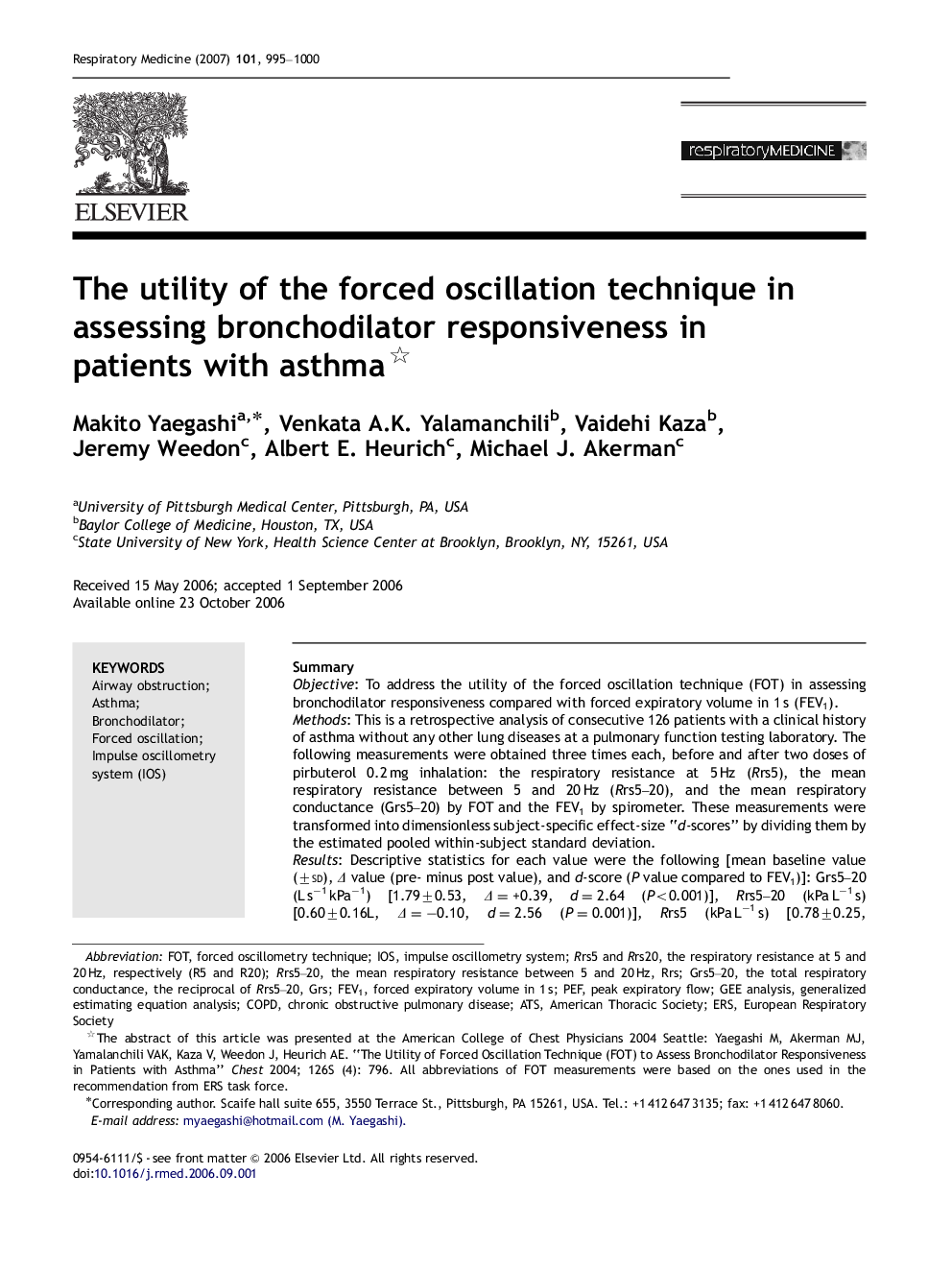| Article ID | Journal | Published Year | Pages | File Type |
|---|---|---|---|---|
| 4211876 | Respiratory Medicine | 2007 | 6 Pages |
SummaryObjective: To address the utility of the forced oscillation technique (FOT) in assessing bronchodilator responsiveness compared with forced expiratory volume in 1 s (FEV1).Methods: This is a retrospective analysis of consecutive 126 patients with a clinical history of asthma without any other lung diseases at a pulmonary function testing laboratory. The following measurements were obtained three times each, before and after two doses of pirbuterol 0.2 mg inhalation: the respiratory resistance at 5 Hz (Rrs5), the mean respiratory resistance between 5 and 20 Hz (Rrs5–20), and the mean respiratory conductance (Grs5–20) by FOT and the FEV1 by spirometer. These measurements were transformed into dimensionless subject-specific effect-size “d-scores” by dividing them by the estimated pooled within-subject standard deviation.Results: Descriptive statistics for each value were the following [mean baseline value (±sd), Δ value (pre- minus post value), and d-score (P value compared to FEV1)]: Grs5–20 (L s−1 kPa−1) [1.79±0.53, Δ=+0.39, d=2.64 (P<0.001)], Rrs5–20 (kPa L−1 s) [0.60±0.16L, Δ=−0.10, d=2.56 (P=0.001)], Rrs5 (kPa L−1 s) [0.78±0.25, Δ=−0.16, d=2.52 (P<0.001)], and FEV1 (L) [1.90±0.64, Δ=−0.20, d=1.83]. The higher d-score of Grs5–20, Rrs5–20 and Rrs5 compared to FEV1 indicates that these are better indicators for bronchodilator response than FEV1. The percentages of subjects exhibiting change in the expected direction after bronchodilator were not significantly different between each value: Rrs5 (85.7%), Rrs5–20 (83.3%), Grs5–20 (83.3%), and FEV1 (83.3%) [P>0.05].Conclusions: Several forced oscillation measures, namely Grs5–20, Rrs5–20 and Rrs5, are more accurate and sensitive for detecting bronchodilator response than FEV1 in patients with asthma.
